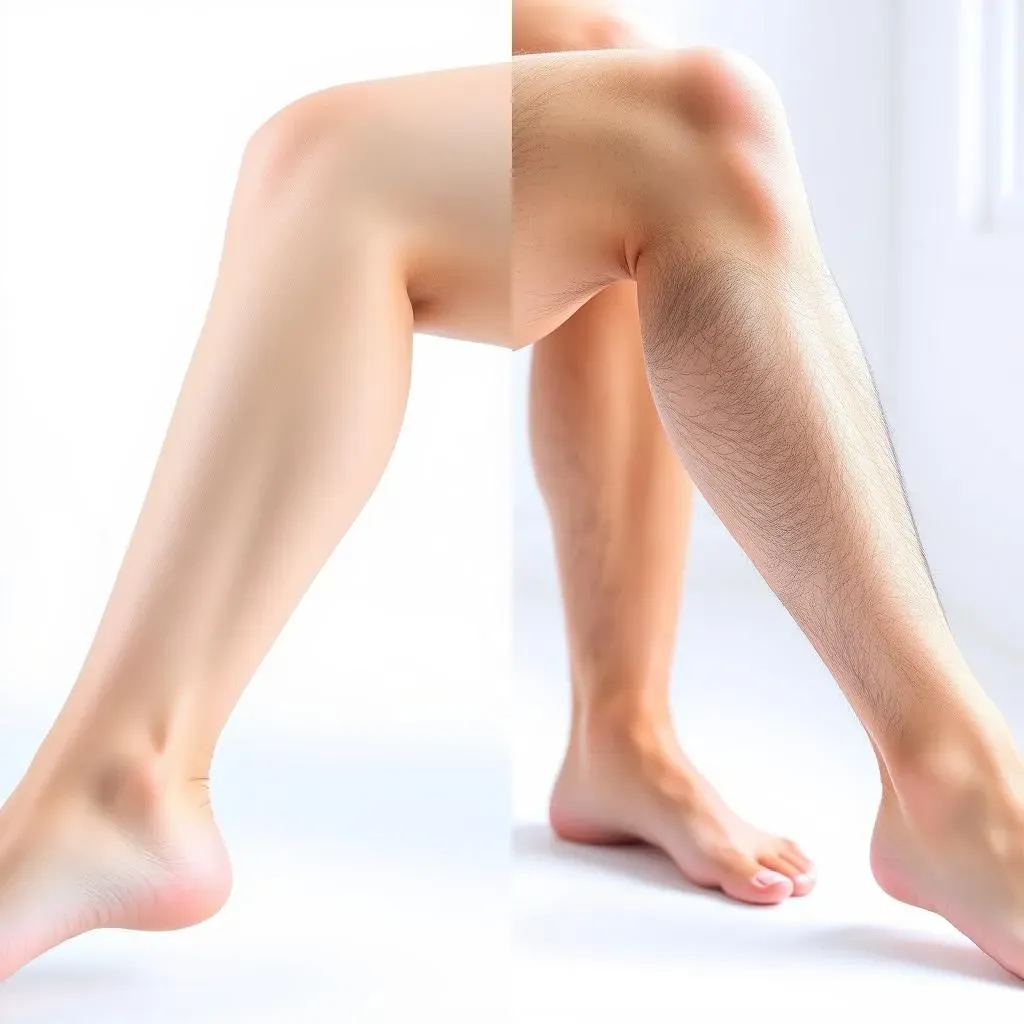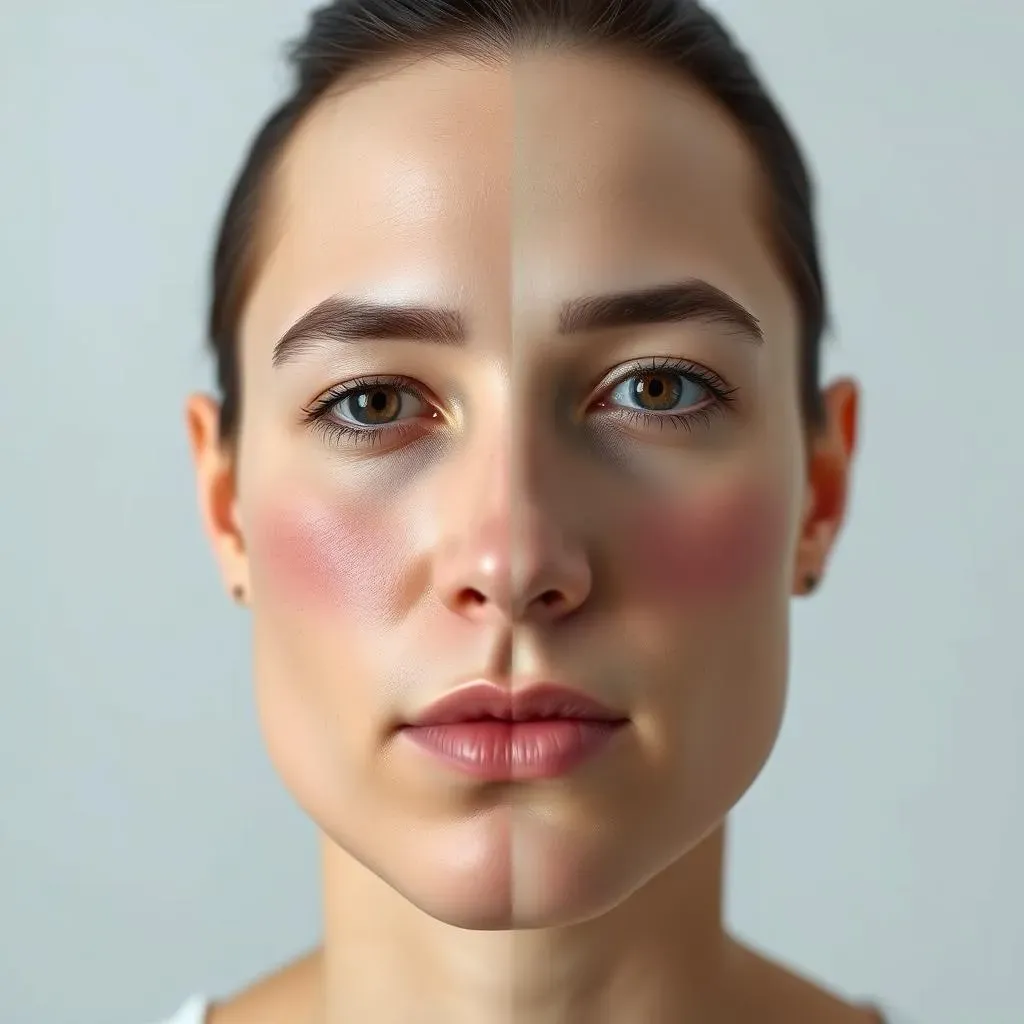Table of Contents
Are you tired of the endless cycle of shaving, waxing, and plucking? Do you dream of smooth, hair-free skin without the hassle or expense of salon visits? Well, you're not alone. Many people are now turning to at-home laser hair removal as a convenient and cost-effective way to achieve those goals. This guide will walk you through everything you need to know about how to use at home laser hair removal effectively and safely. We will explore how these devices work, compare them to other hair removal methods, and give you crucial tips for success. We'll also cover the necessary precautions and considerations to keep in mind before you start. Think of this article as your personal roadmap to achieving smoother skin in the comfort of your own home. So, let's get started and see if at-home laser hair removal is the right choice for you.
How AtHome Laser Hair Removal Works

How AtHome Laser Hair Removal Works
The Science Behind the Zap
so you're probably wondering, "How does this thing actually work?" It's not magic, though it can feel like it when you see the results. At-home laser hair removal devices use a technology called Intense Pulsed Light, or IPL. These devices emit pulses of light that are absorbed by the pigment in your hair follicles. The light energy turns into heat, and that heat damages the follicle, slowing down future hair growth. Think of it like a tiny, targeted heat ray focused on the root of the problem. It's pretty cool, right?
It's important to know that these devices aren't actually lasers in the same way that professional treatments are. They use a broader spectrum of light, which is why they're generally safer for home use. Also, the light is attracted to the melanin in your hair, that's why it works better on dark hair and lighter skin. If you have very light hair or very dark skin, it might not be as effective, which is something to keep in mind. The key is consistent use over time to get the best results.
Key Concept | Explanation |
|---|---|
Intense Pulsed Light (IPL) | Uses broad spectrum light to target hair pigment. |
Melanin | The pigment in hair that absorbs the light. |
Heat Damage | Light turns into heat, damaging hair follicles. |
Hair Growth Cycle | Works best on hair in the active growth phase. |
Targeting the Hair Follicle
Now, let's get a bit more into the nitty-gritty. The light emitted by the device is aimed at your hair follicles. When the melanin in the follicle absorbs the light, it heats up and damages the cells responsible for growing new hair. This doesn't happen overnight, mind you. Your hair grows in cycles, and the treatment is most effective when the hair is in its active growth phase. That means you'll need multiple sessions to catch all the hairs at the right time. It’s like playing a game of whack-a-mole, but with hair.
And that's why you have to be patient! It's not an instant fix, but with consistent use, you'll start to notice less and less hair growing back. The damaged follicles become weaker, and eventually, they may stop producing hair altogether. It’s a process, but trust me, it’s worth it if you’re looking for a long-term solution to unwanted hair. Just remember to follow the instructions that come with your device, and don’t overdo it. More is not always better when it comes to laser hair removal.
Comparing AtHome Laser Hair Removal to Other Methods

Comparing AtHome Laser Hair Removal to Other Methods
Shaving: The Quick Fix
Let's be real, shaving is the go-to for most of us. It's fast, cheap, and you can do it in the shower. But, it's also the most temporary. We're talking about hair growing back within a day or two, and those pesky razor bumps and ingrown hairs? Ugh, no thanks. Plus, think about all the plastic waste from disposable razors! In comparison, at-home laser hair removal is a bigger initial investment, but it's a long-term solution that saves you from the daily grind of shaving.
So, while shaving is convenient, it’s like putting a band-aid on a bullet wound. It addresses the symptom (visible hair) without dealing with the root cause (the follicle). If you're looking for something that gives you more than a day or two of smooth skin, you'll need to explore other options. And that's where at-home laser hair removal starts to look really appealing.
Method | Pros | Cons |
|---|---|---|
Shaving | Quick, cheap | Temporary, razor bumps, ingrown hairs |
Waxing | Longer lasting than shaving | Painful, can cause ingrown hairs, needs hair growth |
At-Home Laser | Long-term results, convenient | Higher upfront cost, requires multiple sessions |
Waxing: The Painful Alternative
let's talk about waxing. It's definitely a step up from shaving in terms of how long the results last. We're talking weeks instead of days, which is a major plus. But, let's not sugarcoat it: waxing is painful! It's like ripping off a band-aid, but on a larger scale and repeatedly. And you have to let your hair grow out a bit before you can wax again, which can be annoying. Plus, ingrown hairs can still be a problem with waxing. So, while it offers longer-lasting smoothness, it comes with some serious downsides.
When you compare waxing to at-home laser, you're trading short-term pain for a long-term investment. At-home laser hair removal is a lot less painful, and you don't have to endure the awkward "growing out" phase. It's like choosing between a quick, painful rip and a series of gentle zaps that lead to permanent results. I know which one I'd choose.
Creams and Electrolysis: The Other Contenders
Then there are hair removal creams, which dissolve hair at the surface. They're less painful than waxing, but they can be irritating to the skin, and the results don't last very long. And let's not forget about electrolysis, which is a more permanent solution, but it's time-consuming, expensive, and requires a professional. So, it's not really a convenient option for most people. It’s like comparing a bicycle to a spaceship: both are vehicles, but one is way more complex and costly.
At-home laser hair removal offers a good balance between effectiveness, convenience, and cost. It's not as instant as shaving, and it's not as permanent as electrolysis, but it's a solid middle ground for people who want long-term results without breaking the bank or spending hours in a salon. It's also a lot less messy than creams. So, when you consider the pros and cons, at-home laser hair removal stands out as a viable option.
Tips for Successful AtHome Laser Hair Removal

Tips for Successful AtHome Laser Hair Removal
Prep Your Skin Right
so you've decided to take the plunge into at-home laser hair removal, awesome! But before you start zapping away, you need to prep your skin. Think of it like preparing a canvas before you paint. First things first, you gotta shave the area you plan to treat. This is super important because the laser needs to target the hair follicle under the skin, not the hair on top. If you don't shave, you'll just end up burning the hair on the surface, and that won't do anything to stop it from growing back. Also, make sure your skin is clean and dry. No lotions, creams, or makeup. Think of it as a blank slate for the laser to work its magic.
Another big no-no: don't wax or pluck before using the laser. These methods remove the hair from the root, and the laser needs the hair follicle to be intact to work effectively. You need that little dark target for the light to home in on. So, ditch the wax strips and tweezers for at least a month before you start your laser treatments. Trust me, this step is crucial for getting the best results and avoiding any unnecessary irritation. Think of it as setting the stage for success.
Do | Don't |
|---|---|
Shave the treatment area | Wax or pluck before treatment |
Clean and dry skin | Apply lotions or creams |
Consistency and Patience are Key
Now, let’s talk about the actual treatment process. When you finally start using your at-home laser, consistency is your best friend. You won't see results after one session; it's a journey, not a sprint. Most devices recommend using them every one to two weeks for the first few months. It's important to stick to this schedule to catch all your hair follicles at the right growth stage. Think of it like tending a garden; you need to water it regularly to see the flowers bloom. If you are inconsistent, you won't get the best results. It's also important to be patient. You won't see a dramatic difference overnight. It takes time for the hair follicles to weaken and stop producing hair. But trust me, the wait is worth it!
Also, don't get discouraged if you see some hair growing back between treatments, that's totally normal. The laser works by gradually reducing hair growth, not by eliminating it instantly. You'll notice the hair becoming thinner and finer over time, and eventually, you'll need fewer and fewer treatments. Remember, Rome wasn't built in a day, and neither is smooth, hair-free skin. So, be patient, stick to the schedule, and you'll get there. It's a marathon, not a sprint, so pace yourself.
Precautions and What to Consider Before You Start

Precautions and What to Consider Before You Start
Skin Tone and Hair Color: The Compatibility Factor
so before you get too excited and start zapping away, let's talk about whether at-home laser hair removal is even right for you. It's not a one-size-fits-all kind of thing. These devices work best on people with light to medium skin tones and dark hair. The reason for this is that the laser targets the melanin (the pigment) in your hair follicles. If your skin is too dark, it can also absorb the laser light, which can lead to burns or discoloration. And if your hair is too light, like blonde, grey, or red, there isn’t enough melanin for the laser to target, so it won't be as effective. It's like trying to use a black marker on a black piece of paper; it just won't show up. So, before you spend any money, make sure you're a good candidate for this kind of treatment. It's always a good idea to check the manufacturer's guidelines to see if your skin tone and hair color are compatible. Don't just assume it'll work for everyone.
Also, if you have any underlying skin conditions, like eczema or psoriasis, you should talk to a dermatologist before using an at-home laser device. These conditions can make your skin more sensitive, and the laser treatment could potentially make things worse. It's always better to be safe than sorry, especially when you're dealing with something that uses heat and light on your skin. It might be tempting to just go for it, but taking a few precautions can save you a lot of headaches later on. So, do your homework, be realistic about your expectations, and make sure this is the right method for you.
Skin Tone | Hair Color | Suitability |
|---|---|---|
Light to Medium | Dark Brown to Black | Most Effective |
Dark | Dark Brown to Black | Less Effective, Risk of Burns |
Light to Medium | Blonde, Grey, Red | Not Effective |
Sensitive Areas and Medical Conditions: Know Your Limits
Now, let's talk about areas where you might want to think twice before using an at-home laser. Some areas of the body are just more sensitive than others. For example, the pubic area is a big one. The skin there is thinner and more prone to irritation, so you need to be extra careful. The same goes for areas with tattoos or moles. The laser can react with the pigments in tattoos and potentially cause burns or fading. And moles should generally be avoided because the laser can make them more sensitive or cause discoloration. It's all about being smart and cautious, not just blindly zapping away. If you are unsure, then just skip the area, it's better to be safe than sorry.
Also, if you're pregnant or have any medical conditions that affect your skin, it's best to hold off on at-home laser treatments. Things like photosensitivity, certain medications, or even recent sun exposure can make your skin more vulnerable to adverse effects. It's like driving in a thunderstorm; you need to be extra careful and aware of the risks. So, when in doubt, consult with a dermatologist or doctor before starting any at-home laser hair removal routine. They can give you personalized advice based on your specific situation, and that’s always the best approach.
Wrapping Up Your At-Home Laser Hair Removal Journey
So, there you have it – a comprehensive guide on how to use at-home laser hair removal. It’s not a magic bullet, but with the right knowledge, patience, and realistic expectations, you can achieve impressive results. Remember, consistency is key, and it’s crucial to follow the device's instructions carefully. While at-home lasers offer a convenient and often more affordable alternative to professional treatments, they might not be the perfect fit for everyone. Be sure to consider your skin tone, hair color, and pain tolerance before you commit. If you're unsure, consulting a dermatologist can provide personalized guidance. Ultimately, the goal is to find a hair removal method that works best for you and makes you feel confident and comfortable. Good luck on your journey to smoother skin!
